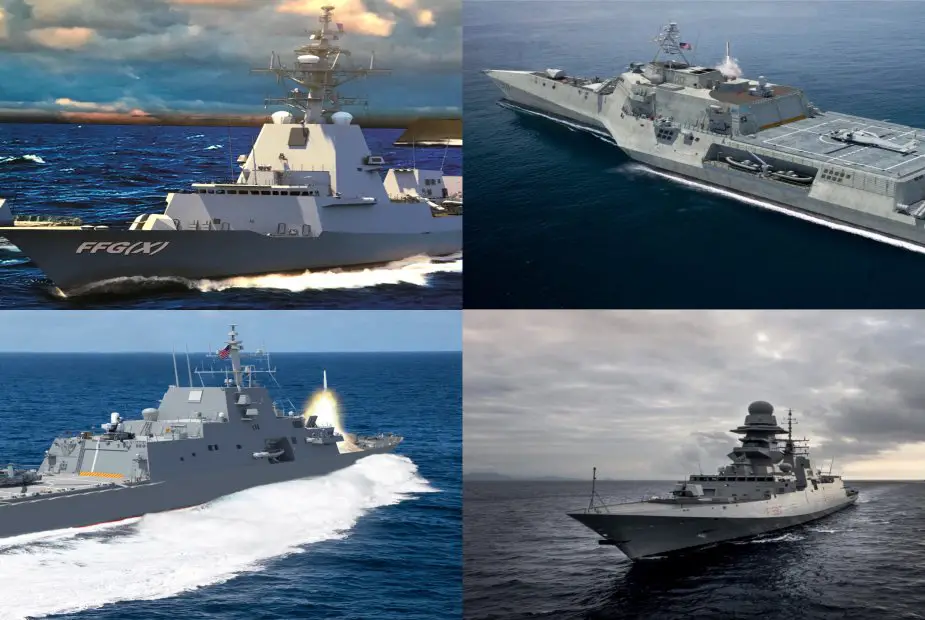Breaking news
US Navy issues final RFP for the FFG(X) next-generation frigates.
The U.S. Navy released the final request for proposals (FRP) for the next-generation guided-missile frigate (FFG(X)) on June 20, outlining the programme that will get the Navy into the business of operating high-end small combatants.
 FFG(X) designs of the four contenders that are expected to make a bid for the RFP of the U.S. Navy (Picture Source: USNI)
FFG(X) designs of the four contenders that are expected to make a bid for the RFP of the U.S. Navy (Picture Source: USNI)
The U.S. Navy is counting on the new frigate to help the fleet to operate in a distributed manner in a more and more contested maritime environment, as lots of Anti-Access Area Denial (A2/AD) systems emerge, among other threats.
To that end, the final solicitation for bids for the FFG(X) program highlights a particular interest in what industry can offer in margins for weight, cooling, electrical and arrangeable deck area, to allow the ship to bring in new technologies as they develop; acoustic signature management; undersea surveillance; and over-the-horizon capabilities.
The Navy currently seeks to have a vessel that would have at least 32 Vertical Launching Systems (VLS) cells, an Aegis-based combat system, the Cooperative Engagement Capability datalink making the frigate capable of sharing targeting data with other vessels and aircraft, and advanced anti-submarine warfare (ASW) and electronic warfare systems.
The Navy also expects the FFG(X) to be fitted with government-furnished equipment, including a fixed-face Raytheon Enterprise Air Surveillance Radar (EASR) that will serve as the primary air search radar, at least 32 Mark 41 VLS cells fielded with either Standard Missile 2 (SM-2) Block IIICs or RIM-162 Evolved SeaSparrow Missiles (ESSM), the COMBATSS-21 Combat Management System (CMS) based on the Aegis Combat System.
It would also be capable of accommodating an aviation detachment that includes an MH-60R Seahawk helicopter and an MQ-8C Firescout UAV. Ideally, the FFG(X) would also have enough space, weight and cooling for 8 to 16 Over-the-horizon anti-ship cruise missiles, and for a 150-kilowatt laser.
Further highlighting the focus on allowing the ships to be upgraded as technology evolves, the solicitation asks that bids include a “description of the flexibility in the design to accommodate efficient warfare systems upgrades by explaining equipment removal and upgrade paths with an emphasis on avoiding hull cuts or the need for dry docking,” as well as provisions for upgrading hull-mounted and towed undersea warfare sensors.
Of the five companies that participated in the design maturation phase, four are expected to submit bids to the RFP. Austal USA, who builds the Independence-variant Littoral Combat Ship; Fincantieri Marine, which builds the Italian FREMM multipurpose frigate; General Dynamics Bath Iron Works, who will partner with Spanish F100-builder Navantia; and Ingalls Shipbuilding, who has declined to discuss its design, all worked with the Navy to take their existing parent designs and mature them to become in line with the Navy’s vision for its guided-missile frigate. Lockheed Martin, which builds the Freedom-variant LCS, was part of that effort as well but announced it would not continue on with the frigate competition.



























